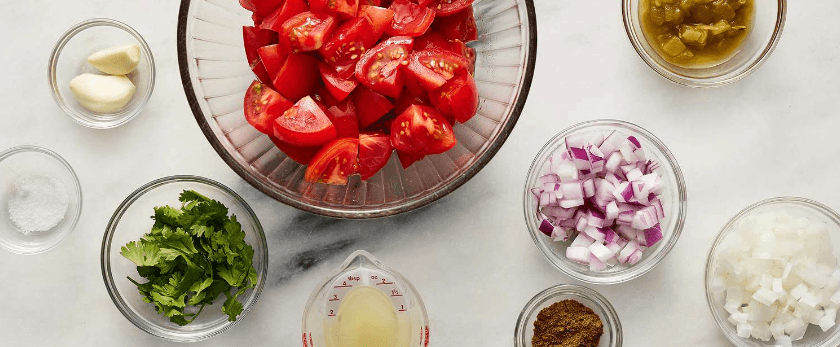Salsa is a popular condiment that adds a burst of flavor to any dish. Whether you're dipping tortilla chips, topping tacos, or adding it to your morning eggs, salsa is a versatile and tasty addition to any meal. However, store-bought salsa often comes in plastic containers that end up in landfills, contributing to the growing problem of plastic pollution. But fear not, because making your own salsa at home is not only better for the environment, but it's also easy and delicious. In this article, we'll explore why store-bought salsa is bad for the environment, the benefits of making your own, and provide a simple and tasty homemade salsa recipe.
Why Store-Bought Salsa is Bad for the Environment
-
Plastic Packaging: Most store-bought salsa comes in plastic containers that are not easily recyclable. These containers end up in landfills, where they can take hundreds of years to decompose, releasing harmful chemicals into the environment.
-
Transportation: Store-bought salsa is often transported long distances, contributing to carbon emissions and air pollution. This is because the ingredients are sourced from different locations, and the final product is then shipped to various stores.
-
Preservatives: To increase the shelf life of store-bought salsa, preservatives are added. These preservatives can be harmful to the environment and our health.
-
Single-Use Packets: Many restaurants and fast-food chains provide single-use packets of salsa, which are often not recyclable and end up in landfills.
Why Making Your Own Salsa is Better for the Environment
-
Reduces Plastic Waste: By making your own salsa at home, you can avoid buying store-bought salsa in plastic containers. This reduces the amount of plastic waste that ends up in landfills and our oceans.
-
Locally Sourced Ingredients: When you make your own salsa, you have control over the ingredients you use. You can choose to use locally sourced, organic ingredients, reducing the carbon footprint of your salsa.
-
No Preservatives: By making your own salsa, you can avoid using preservatives, making it a healthier and more environmentally friendly option.
-
Reusable Containers: Instead of using single-use plastic containers, you can store your homemade salsa in reusable glass jars or containers, reducing waste and promoting sustainability.

What You'll Need to Make Homemade Salsa
- 6 medium-sized tomatoes
- 1 onion
- 2 cloves of garlic
- 1 jalapeno pepper
- 1 lime
- 1 bunch of cilantro
- Salt and pepper to taste
- Blender or food processor
- Cutting board
- Knife
- Bowl
- Spoon
Directions for Making Homemade Salsa
-
Start by washing and drying the tomatoes, onion, jalapeno pepper, and cilantro.
-
Cut the tomatoes into quarters and remove the seeds. Then, chop the tomatoes into smaller pieces and place them in a blender or food processor.
-
Peel and chop the onion and garlic cloves, and add them to the blender.
-
Cut the jalapeno pepper in half and remove the seeds. If you prefer a spicier salsa, you can leave some of the seeds in. Chop the pepper into smaller pieces and add it to the blender.
-
Squeeze the juice of one lime into the blender.
-
Add a handful of cilantro leaves to the blender.
-
Blend all the ingredients until you reach your desired consistency. If you prefer a chunkier salsa, blend for a shorter amount of time.
-
Taste the salsa and add salt and pepper to your liking.
-
Pour the salsa into a bowl and refrigerate for at least 30 minutes to allow the flavors to meld together.
-
Serve and enjoy your homemade, eco-friendly salsa!
Tips for a More Sustainable Salsa
- Use organic and locally sourced ingredients when possible.
- Instead of buying pre-packaged tortilla chips, make your own by cutting tortillas into triangles and baking them in the oven.
- Use reusable containers to store your salsa.
- If you have leftover salsa, freeze it in an ice cube tray and use it as a flavor boost in soups or stews.
- Get creative with your salsa by adding different ingredients like mango, pineapple, or black beans.
Conclusion
Making your own salsa at home is not only better for the environment, but it's also a fun and delicious way to add flavor to your meals. By avoiding store-bought salsa in plastic containers, you can reduce your plastic waste and contribute to a more sustainable future. So next time you're craving some salsa, skip the store and make your own at home. Your taste buds and the planet will thank you.










